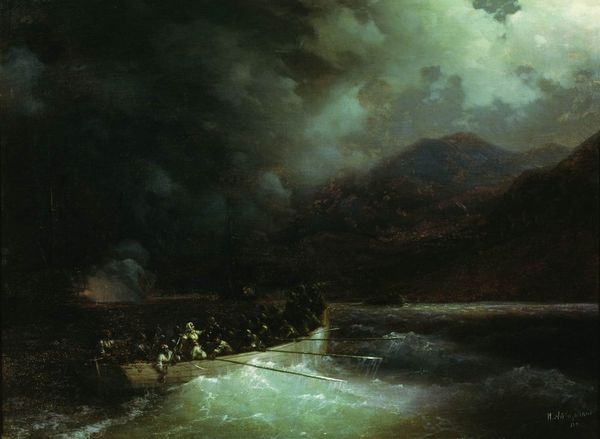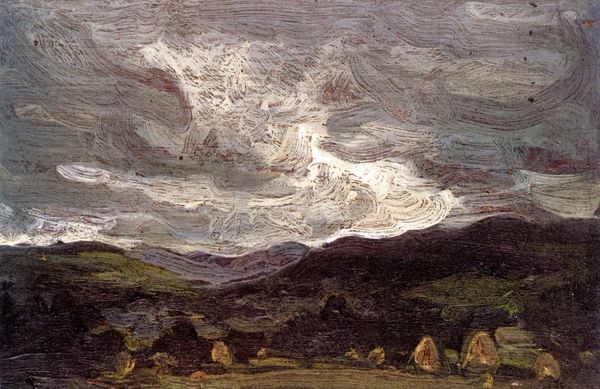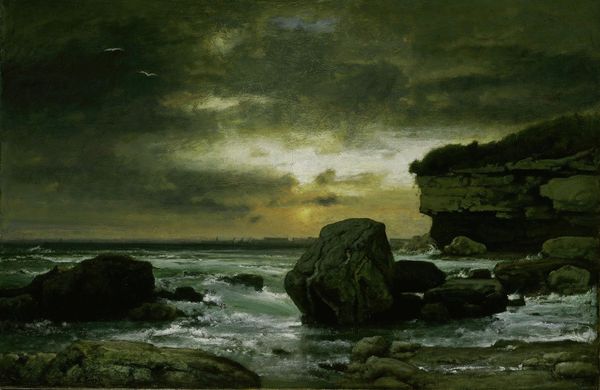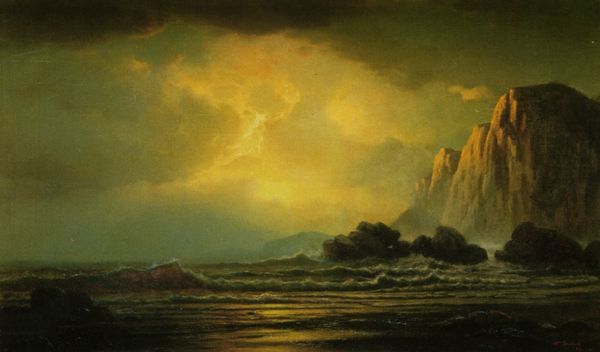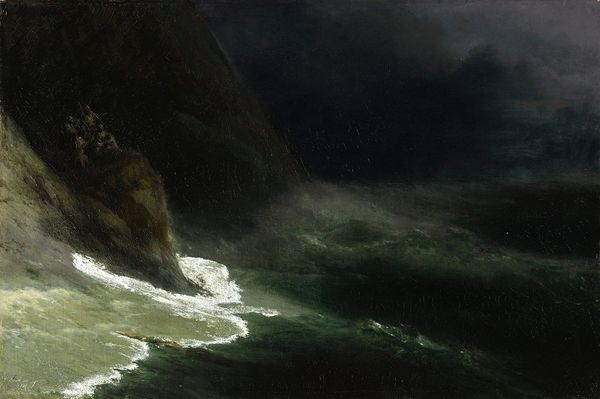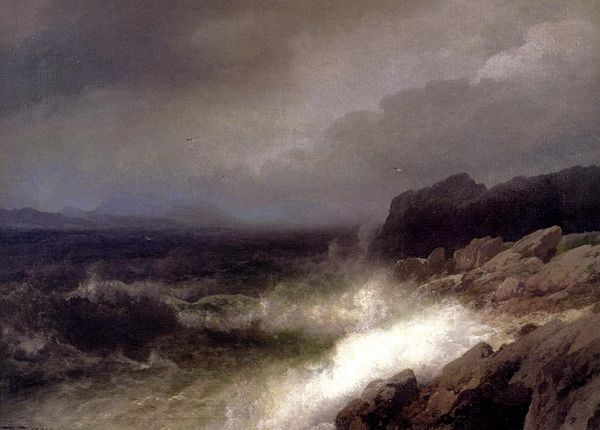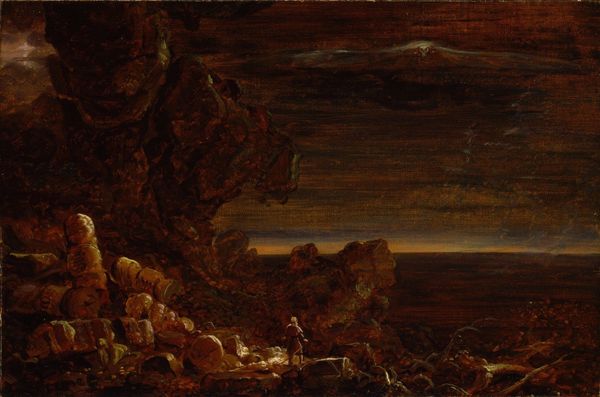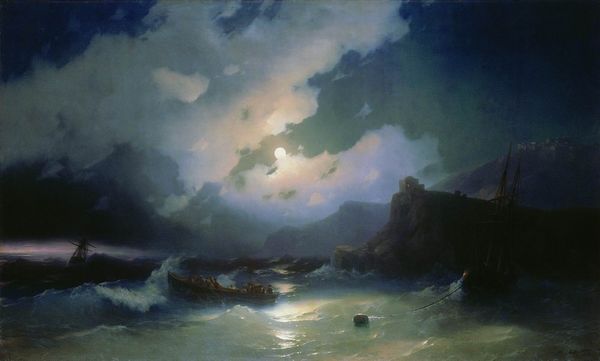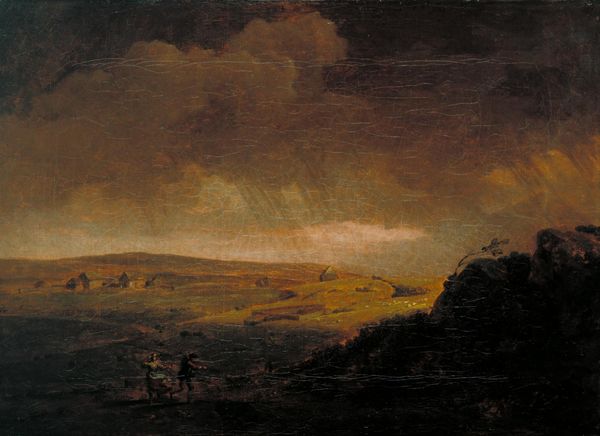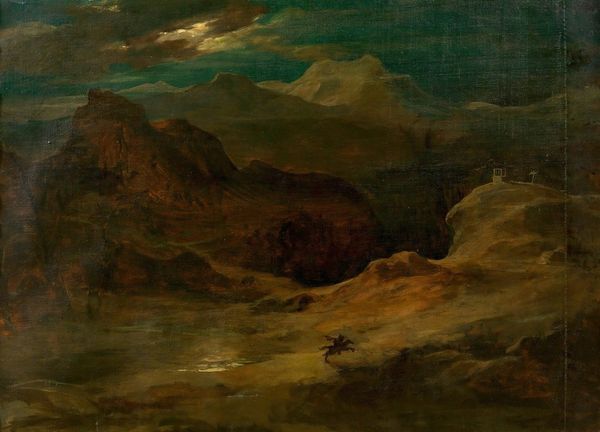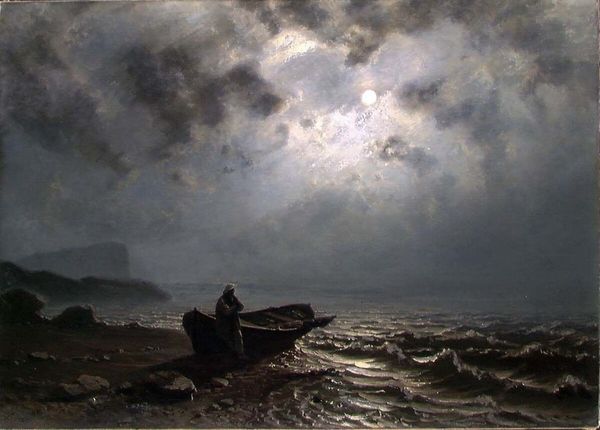
painting, oil-paint
#
sky
#
narrative-art
#
painting
#
oil-paint
#
landscape
#
romanticism
#
sea
Dimensions: 97 x 130 cm
Copyright: Public domain
Curator: Immediately striking. A raw and unsettling vision. Editor: We’re looking at "Scene of the Deluge", painted around 1820 by Théodore Géricault. It’s an oil on canvas and currently resides in the Louvre. Curator: The materiality really reinforces that feeling, doesn't it? Look at the texture, those thick impasto strokes, mimicking the churning water, the sheer physicality of survival. One can imagine the quality of paints available during the romantic period to have surely added an interesting textural dimension. Editor: It does draw you in. It was produced within the context of post-revolutionary France, a time marked by political instability, and perhaps a sense of collective trauma. Deluge myths recur across cultures—it certainly resonates beyond just a biblical interpretation. Curator: Consider how the lack of defined forms blurs the boundary between human figures and the overwhelming power of nature. The very pigment seems to swirl, pulling everyone toward inevitable doom. How did Géricault procure the raw materials? What were the social conditions of his studio assistants as they were producing such dramatically moving works? Editor: Fascinating. Did Géricault envision it as a universal warning about humanity's hubris, or was it shaped more by the specific social anxieties of his time? Did its initial exhibition reflect broader religious sentiments and interpretations prevalent in Parisian society at the time? These early receptions would have had long-lasting implications in shaping later understanding of the artwork, no? Curator: Definitely a dialogue with nature, almost a battle using whatever raw materials available at the time, whatever the costs. It is hard to escape that reading. Editor: Absolutely. It compels us to examine the artwork and broader themes of social change, questioning artistic representation of societal transformation as well as the enduring echoes that speak to a present reality. Curator: It definitely makes me consider the labour involved in the manufacturing of the raw pigment. What implications would the economic circumstances of this time have on artistic process? A truly remarkable painting! Editor: A painting prompting questions which still hold so much value today.
Comments
No comments
Be the first to comment and join the conversation on the ultimate creative platform.

